A Donbas war veteran and a civil volunteer to Ukraine's defensive efforts in Donbas have pursued a most hopeless venture -- cultivating huge freshwater shrimp in Ukraine. Professors said their dream was hopeless: only Malaysia and Indonesia have the right conditions for shrimp to reproduce. The two friends proved them wrong: their small enterprise plans to reach 21 tons of output and is now delivering shrimp to Kyiv restaurants.
- Read also: First oyster farm in mainland Ukraine plans to ramp up production (2017)
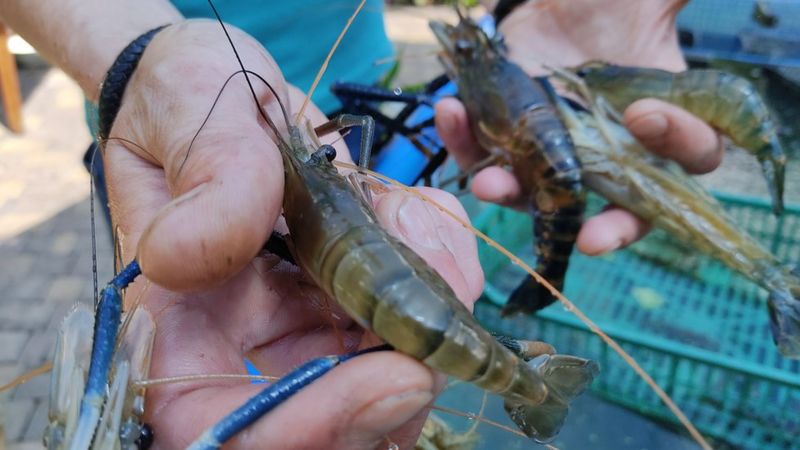
Ukrainian shrimp
Such an enterprise is the only one in Ukraine, says Oleksiy Slepniov. It is engaged in the year-round industrial cultivation and breeding of freshwater Rosenberg shrimp. Prior to that, Oleksiy studied how shrimp farms get arranged and operated in Malaysia and other countries. For a year and a half, he, together with his friends, implemented the technologies he brought home.
According to Agroportal, Mr. Slepniov bought his first batch of shrimp abroad and switched his clutch of shrimp to Ukrainian food such as nettles, lettuce and spinach, pumpkins, mushrooms, apples, cucumbers, zucchini, snails, seaweed, worms, fish, cereals, and so on.
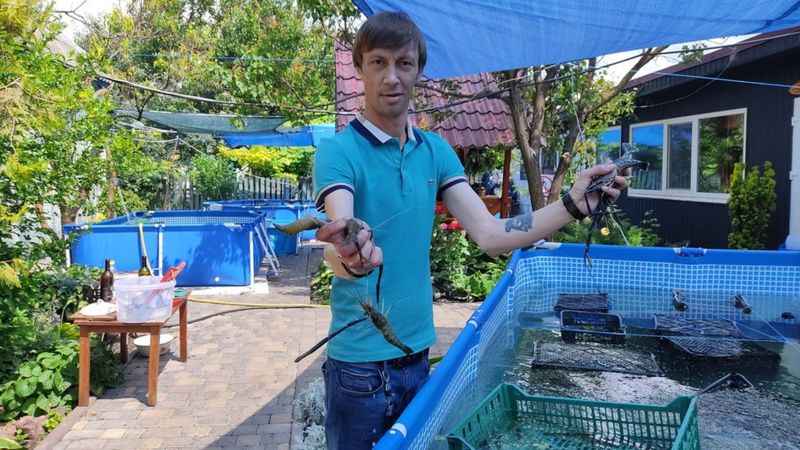
"We teach people so that everyone would grow shrimp successfully. It may stop growing only due to human negligence. You should live and breathe it, you should love this business. I come to the farm at six in the morning and go home late at night, after 1 A.M." says Oleksiy Slepniov.
Malaysia and Indonesia in a Ukrainian backyard
Another co-founder of Ukrainian Shrimp LLC, an ATO hero from Kaniv, Cherkasy Oblast, Oleksandr Riaboshlyk spent the compensation for his battle wounds for kick-starting his business. He says that the hardest thing was to raise the offspring of the shrimp, or fry. It failed to work out right away, "At first I didn't get many fry, but I achieved the result," Riaboshlyk recalls the beginning of his business. He explained that it is difficult to create natural conditions for breeding offspring. The salinity of water and its temperature is important. Their shrimp is of the freshwater variety, but after fertilization, its fry needs 40 days of living in salty oceanic water, where the eggs grow to the nauplii, fry. Water should be prepared with oceanic salt.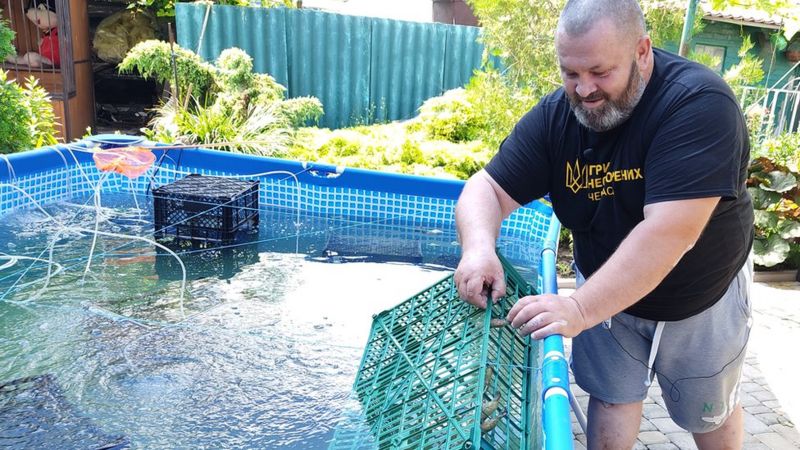
His investment paid off a long time ago now, and last year Mr. Riaboshlyk started a rehabilitation program for ATO participants. He presented 50 baby shrimp free of charge to each willing veteran of the war."Even the professors told us that all we were doing would be in vain. Malaysia and Indonesia would be needed for this. Well, now Malaysia and Indonesia are right here in our back yard," says Oleksandr.
"We teach them for free and even make them work. The main thing is to get rid the indifference that 'it will grow anyway.' For example, boxes in the pools should be rearranged several times a day so that shrimp do not settle, but were in the move to gain weight better. The food should be given in doses so that it wouldn't get rot. Willy-nilly, you go and do it. Using others is only good for pulling your chestnuts out of the fire," says Oleksandr.Now, his brothers-in-arms are creating their own small farms. They grow shrimp in open water and indoor pools, which depends on their financial capabilities. And one even made two dugouts as in the summer the shrimp can live in open water. For the winter season, people re-purpose various buildings as shrimp greenhousesб such as basements and garages. Some build special shops. There was a case when people bought an old school building to reproduce there the conditions in which the shrimp can go through their entire growing cycle. Others bought an abandoned pig farm and converted it to their shrimp farm.
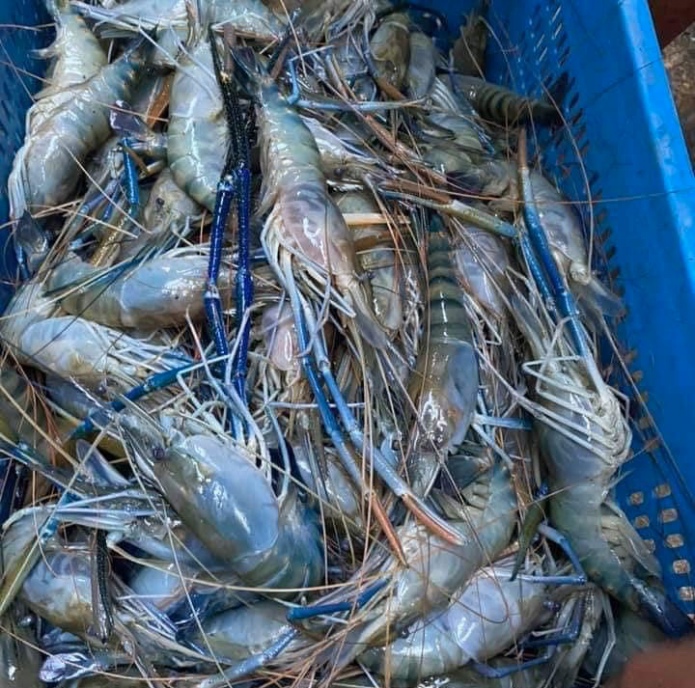 Most can't afford the industrial scale of production so far, but they have prospects. At the instigation of Oleksiy and his colleagues, there are now such small enterprises in every province of Ukraine. He himself also started with only 100 juvenile shrimp he brought from abroad.
Most can't afford the industrial scale of production so far, but they have prospects. At the instigation of Oleksiy and his colleagues, there are now such small enterprises in every province of Ukraine. He himself also started with only 100 juvenile shrimp he brought from abroad.
"We grow ourselves everything they feed on"
In summer, growing shrimp requires a minimum of costs. They can live in ordinary lakes, dugouts, just like, say, crucian carp. During its whole life cycle of three to four months, a shrimp eats a kilogram and a half of food. Like their Malaysian and Indonesian siblings, Ukrainian shrimp have a mixed protein-vegetable diet. The nutrition was adapted to Ukrainian realities introducing mushrooms, shellfish, nettles, lettuce, spinach, zucchini, cucumbers."We grow ourselves everything they feed on, even earthworms. We only buy small fish," says Oleksiy Slepniov.Shrimp is a nocturnal animal that isn't active during the daytime. You feed it in the evening starting from 6 p.m. and ending at 1 a.m.
"We feed them in portions 6-8 times. The main thing is to learn how to do it right. You can't pour all food like for sturgeon, trout, like for pigs or chickens. Shrimp eat everything fresh, alive, and natural," explains Oleksiy.
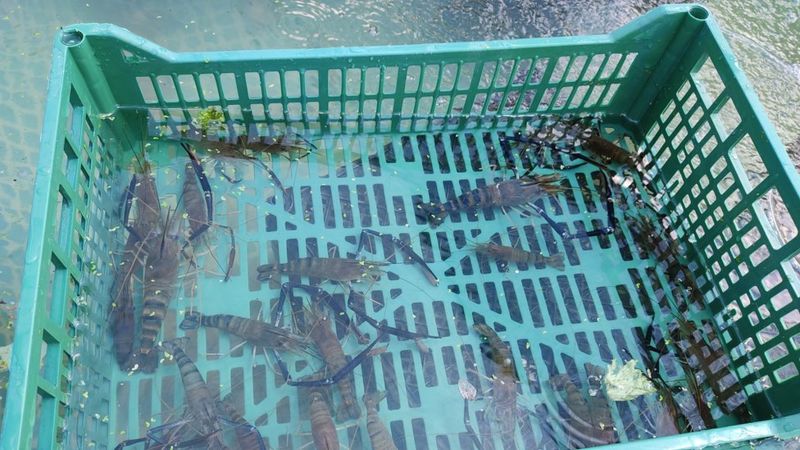
Exports, imports, plans
"Our industry doesn't get support from anyone. Everything we do is only by ourselves. In Iran, America, shrimp programs get state funding. 80% of the world's shrimp are grown industrially, not fished out from the ocean," complains Oleksiy Slepniov.He says they don't need financial support from the state. Yet they encounter problems that can be solved at the legislative level: Ukraine doesn't have customs clearance forms for the export of shrimp to the European Union. Because there has been no such business here by now.
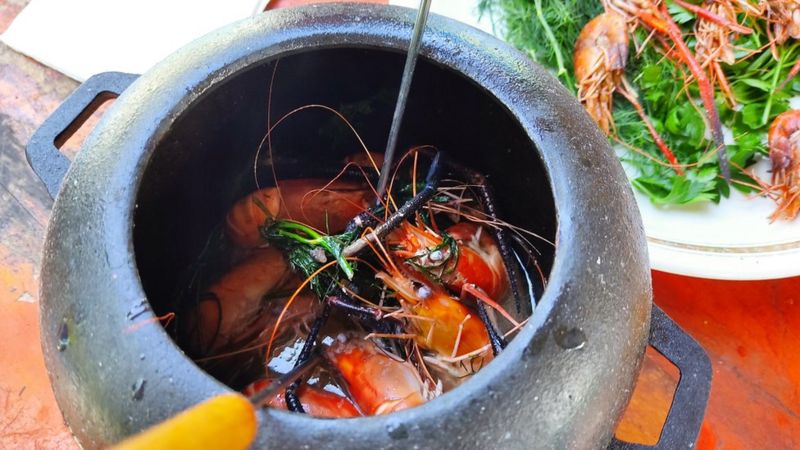
Further reading:
- First oyster farm in mainland Ukraine plans to ramp up production (2017)
- Ukrainian Donbas war veteran creates innovative poultry farm as part of SME-boosting program
- “Land of opportunities”: How a Swiss woman fulfilled her dream of an organic tea business in Ukraine
- Ukraine’s most powerful wind turbines now produced 45 km away from the front line
- Biogas plant opens in front-line Volnovakha this year (2017)
- Wild-honey farmers of Polissya: People of the forest





